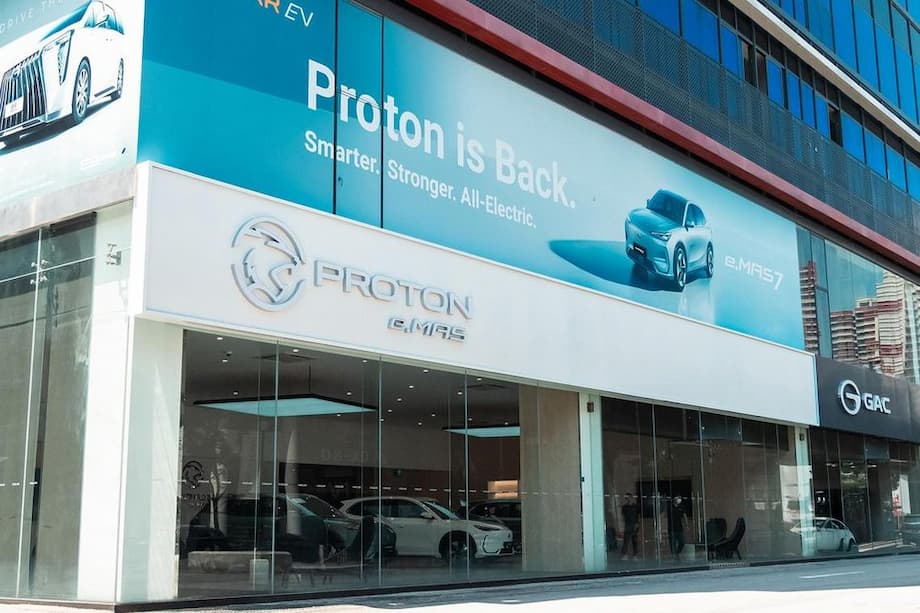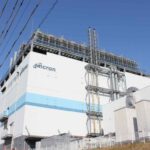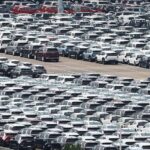A comeback built on electric momentum
After an 11 year pause, Malaysia’s national carmaker Proton will return to Singapore on September 17 with a product that reflects its reinvention. The company is reopening in the city state with the e.MAS 7, a midsize electric sport utility vehicle that has become Malaysia’s best selling EV since its launch in December 2024. Proton’s new showroom in the Leng Kee automotive belt will host the re entry, where eight customers are set to receive their cars on day one, signaling the start of deliveries and a renewed presence in a market that once knew Proton for budget friendly sedans.
- A comeback built on electric momentum
- Why Singapore matters for Proton
- What the e.MAS 7 offers
- How much will it cost and what drives the price
- Charging, servicing, and cross border support
- How Proton plans to build and supply its EVs
- Who Proton is up against
- What comes next in the lineup
- What this means for Singapore drivers
- At a Glance
The comeback is grounded in Proton’s tie up with China’s Zhejiang Geely Holding Group, which acquired a 49.9 percent stake in 2017 while Malaysian conglomerate DRB Hicom retained 50.1 percent. That partnership reshaped Proton’s model lineup and restored profitability in 2019 after several loss making years. The e.MAS 7 is the first EV under this collaboration and the spearhead of an export strategy that places Singapore alongside early overseas markets such as Nepal and Trinidad and Tobago, with Mauritius in the pipeline later this year. Proton also inaugurated its first EV assembly plant on September 4 at the Automotive High Technology Valley in Tanjong Malim, Perak, a facility designed to scale from 20,000 to 45,000 units a year as demand builds.
For Singapore, the e.MAS 7 marks a notable return. Land Transport Authority records show Proton’s presence dwindled from about 4,000 cars on the road in the early 2010s to just 311 by December 2024. The brand now reemerges with a focus on full electric models, while leaving the door open for hybrids depending on local emissions related policies.
Proton’s appointed distributor VINCAR Group is expected to combine product and service sweeteners to attract buyers, including free servicing for up to 10 years and cross border emergency assistance through 35 e.MAS dealers across Malaysia. That cross border support is a practical angle for Singapore drivers who routinely travel to Johor and beyond for work or weekend trips.
Launch timeline and first deliveries
Proton previewed the e.MAS 7 to Singapore shoppers at The Car Expo 2025 earlier in the year, building momentum toward the September launch. A limited Founders Edition run of 99 units was announced with a S$20,000 discount off the initial pricing, setting the headline figure at about S$173,988. The official handover of the first eight vehicles at VINCAR’s Leng Kee showroom will mark Proton’s visible return to Singapore streets.
Why Singapore matters for Proton
Singapore’s car market is small in absolute numbers but highly influential in Southeast Asia. EV adoption is rising fast, public charging is scaling up, and consumer expectations on safety, software, and service are exacting. A strong showing here is valuable for any brand seeking credibility across the region. Proton’s leaders have made clear that performance in Singapore will shape their export playbook.
Proton chief executive Li Chunrong described the city state as a proving ground for the brand’s electrification push and broader international plans. He set an ambitious goal to place Proton among the top three brands in the full electric SUV class, while acknowledging fierce competition from Chinese rivals.
Dr Li underscored the strategic role of Singapore in a message to regional media.
“Singapore is a developed market and if we can get good performance in Singapore, I believe we can go to more countries,” said Proton CEO Li Chunrong.
What the e.MAS 7 offers
The e.MAS 7 is a C segment, front wheel drive electric SUV with two trims, Prime and Premium. Both use a single motor that produces 218 PS (160 kW) and 320 Nm of torque, with a stated top speed of 175 kmh. Battery options differ by variant. The Prime uses a 49.52 kWh Aegis short blade lithium iron phosphate pack rated at 345 km on the WLTP test cycle. The Premium carries a 60.22 kWh pack rated at up to 410 km WLTP. Both accept 11 kW AC charging. DC fast charging is capped at up to 80 kW in the Prime and up to 100 kW in the Premium. Proton quotes a 30 to 80 percent DC charge in about 20 minutes when conditions are optimal.
Tech features reflect a modern EV brief. A 12 in 1 electric drive system integrates key power electronics for efficiency and packaging. The cabin centers on a 15.4 inch 2.5K touchscreen running Flyme Auto, paired with a 7 nm intelligent cockpit chip. Full LED lighting, a streamlined body with a 0.275 drag coefficient, and 18 inch wheels aim to balance range and ride comfort. Singapore cars are slated to mirror the Prime specification at launch and will be offered in six colors, including a new Moyu Black finish alongside Platinum Silver, Turquoise Green, Slate Grey, Quartz Rose, and Lithium White.
Safety and software
Proton has highlighted safety and service as core selling points in Malaysia and aims to carry that message into Singapore. The company says the e.MAS 7 includes a suite of active driver assistance features, and it has emphasized real world usability, such as a claimed 400 mm water wading depth adapted for regional conditions. Software centric experiences, from connected services to infotainment, are a focus area as Proton grows its EV lineup.
How much will it cost and what drives the price
Proton and VINCAR have previewed a Singapore price starting around S$173,988 for the Founders Edition, after a S$20,000 introductory discount. The model falls into Category B for Singapore’s Certificate of Entitlement (COE) system because its output exceeds the Category A power threshold. That classification tends to attract a higher COE premium, which is a major driver of the final on road price. By comparison, the e.MAS 7 is priced in Malaysia from roughly RM105,800 to RM119,800 depending on variant, a gap that reflects Singapore’s tax structure and COE costs rather than hardware differences.
For new buyers, it helps to understand the local pricing layers. The Additional Registration Fee and the COE form the largest parts of the bill. EVs can qualify for the EV Early Adoption Incentive (EEAI), which reduces the ARF by up to S$20,000, and for incentives under the Vehicle Emissions Scheme, which can reduce the ARF by up to S$25,000 for the cleanest bands. Combined, those programs can offset up to S$45,000, subject to banding and eligibility. Final pricing still depends on the COE clearing price at the time of registration.
Total ownership cost will vary with COE cycles, optional equipment, financing, and insurance. Buyers should check what is included in the distributor package at the time of booking, including home charging solutions and any guaranteed COE options.
Charging, servicing, and cross border support
Singapore’s public charging buildout has accelerated. Government targets set a goal of about 12,000 chargers across some 2,000 HDB parking locations by the end of this year and 60,000 points across the island by 2030. A nationwide shift to clean energy vehicles is planned by 2040, which creates a backdrop of growing infrastructure and policy support for EV buyers.
The e.MAS 7’s DC charging peak of 80 kW in the Prime and 100 kW in the Premium allows useful top ups during errands or a meal stop. Proton’s 30 to 80 percent in about 20 minutes claim is within the envelope of current infrastructure. Actual times vary with temperature, charger capability, state of charge, and battery conditioning, which is common to all EVs.
Service and assistance are central to Proton’s pitch. VINCAR is expected to offer free servicing for up to 10 years, a strong value add in a market sensitive to running costs. Singapore owners will also be able to request emergency assistance from 35 e.MAS dealers across Malaysia. That cross border network is attractive to drivers who head to Johor Bahru, Malacca, or Kuala Lumpur by road. It addresses one of the common EV adoption worries, which is reliable support when traveling outside the home market.
What owners should verify before buying
Prospective buyers should confirm home or workplace charging options, check the VINCAR servicing inclusions and intervals, and ask about roadside assistance coverage limits inside Malaysia. For cross border use, factor in charger availability along planned routes and hotel charging policies.
How Proton plans to build and supply its EVs
Proton opened its first EV assembly plant on September 4 in Tanjong Malim (Perak). The company targets initial capacity of 20,000 units a year, with the ability to scale to 45,000. The e.MAS 7 will be the first model assembled there, followed by the entry level e.MAS 5. For now, Singapore bound cars will come from Geely’s facility in China as completely built units. Proton has also started work on local assembly of the e.MAS 7 from completely knocked down kits, with completion targeted by the end of 2025, supported by an investment of RM82 million dedicated to EV production capability.
EV manufacturing reshapes supplier networks. Electric cars use fewer mechanical parts than internal combustion engine models, while requiring complex battery systems, power electronics, and more semiconductors. Proton has been linking Malaysian vendors with Geely’s EV suppliers to help them pivot to new components and quality standards. Export volume is important for cost competitiveness, since the Malaysian market alone is not large enough to secure economies of scale. Proton’s decision to export the e.MAS 7 to markets such as Singapore, Nepal, and Trinidad and Tobago reflects that requirement for scale.
Malaysia’s leadership has cast the plant as part of a broader industrial strategy. At the launch of the facility, Prime Minister Anwar Ibrahim urged deeper investment and a focus on talent and technology.
“Use the opportunity to establish not only a factory to produce cars but also a centre of excellence for training and education,” said Malaysian Prime Minister Anwar Ibrahim at the Tanjong Malim plant launch.
Who Proton is up against
Proton enters a crowded field that includes Chinese brands with aggressive pricing and software heavy interfaces, legacy global automakers, and Tesla. In Malaysia, the e.MAS 7 has outpaced rivals such as BYD in recent months, with nearly 5,000 units delivered by July 2025 and thousands more on order. Singapore is a different battlefield, shaped by COE categories, tightly managed supply, and intense competition for premium Category B quotas.
Brand familiarity will help, although Proton’s footprint in Singapore has faded since 2014. As of late 2024 only a few hundred Proton cars remained registered in the city state. The new distributor will need to rebuild awareness and trust, which is where extended service offers and cross border assistance can be persuasive. Proton executives have repeatedly said they want e.MAS to rank among the top three in the full electric SUV class. That target will require a distinct value proposition on safety, cabin tech, and service, not just price.
What comes next in the lineup
Proton’s next EV is the e.MAS 5, a B segment hatchback planned to launch in Malaysia in the fourth quarter of 2025. The company has indicated two variants with WLTP ranges similar to the e.MAS 7 trims, at about 345 km and up to 410 km. Singapore availability is expected to follow, potentially in 2026 pending local policy alignment and market conditions. That second model would give Proton a smaller, more affordable offering to complement the e.MAS 7 SUV.
Proton has also described the Tanjong Malim facility as a base for future new energy vehicles. NEV is an umbrella term that can include battery electric, plug in hybrid, and extended range models. Product mix will likely depend on demand patterns and policy signals in markets across Southeast Asia.
What this means for Singapore drivers
The e.MAS 7 arrives with a clear brief. It offers a usable WLTP range, brisk performance for daily driving, a large and modern cabin, and tech that aligns with current buyer expectations. Pricing is competitive relative to Category B EVs once incentives are applied, though the COE’s influence keeps the headline figure far above Malaysia’s retail price. Proton and VINCAR are adding value on the ownership side with long servicing coverage and a cross border safety net.
For families who value space, the e.MAS 7’s footprint and interior layout will be a draw. For drivers who make frequent trips to Malaysia, the extended assistance network is a tangible advantage. Those who are price focused will weigh the e.MAS 7 against rivals from China and established global brands, many of which also target the Category B segment.
Shoppers should evaluate home charging access, compare range claims with daily needs, review insurance premiums for Category B EVs, and consider timing COE bids to manage budget. A showroom visit will also help assess infotainment responsiveness, driver assistance behavior, and overall build quality.
At a Glance
- Proton returns to Singapore on September 17 after an 11 year absence, led by the e.MAS 7 electric SUV and a new showroom on Leng Kee Road.
- Eight early buyers will receive their cars at launch, with a limited Founders Edition priced from about S$173,988 after a S$20,000 discount.
- The e.MAS 7 offers two variants, Prime and Premium, with WLTP ranges of about 345 km and up to 410 km, and DC fast charging at up to 80 kW or 100 kW.
- VINCAR is expected to include free servicing for up to 10 years and cross border emergency assistance via 35 e.MAS dealers across Malaysia.
- Singapore cars will initially be sourced from Geely’s plant in China, while Proton’s new EV assembly plant in Tanjong Malim ramps up capacity.
- Proton CEO Li Chunrong says success in Singapore is a springboard for further exports, with a goal to rank among the top three full electric SUV brands.
- Singapore’s EV ecosystem is expanding, with charging targets of 12,000 points by year end and 60,000 by 2030, and incentives that can offset ARF by up to S$45,000.
- The next model, the e.MAS 5 hatchback, is planned for Malaysia in late 2025, with Singapore availability expected thereafter.




